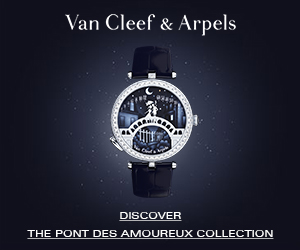Natalia Stewart Talks Costuming For Giselle
Natalia Stewart is a former ballet dancer turned costume designer who was born in Russia but is now based in London. She is the costume designer for the Royal New Zealand Ballet’s brand new production The TelstraClear Season of Giselle which opens in Wellington on the 7 November and then tours to seven centers around New Zealand until 12 December. We catch up with Natalia about her transition from dancer to costume designer, plus find out her inspiration for the costuming of Giselle...
You were a dancer with the Russian ballet before you started costume design, what inspired you to make this transition?
I do not remember a time when I was not interested in theatre, making stage productions or creating costumes. Even before joining ballet school at the age of 9 I had a creative mind. Every summer holiday I’d create a play or a puppet show for my family and the young audience at our summer house (dacha). Each play always had music and costumes and sometimes I had to make new puppets as there wasn’t a huge variety of them in Russia during the Soviet time. I have always loved the creative process and how it is possible to make something by simply starting with a little piece of material and a good idea.
What was the first costume project you worked on?
While at ballet school we did a lot of class productions and I volunteered to design the costumes for these shows.
The professional life of the ballet dancer is not long and throughout my dancing career I always knew that one day I will come back to my original dream of becoming an artist.
When I had to stop dancing I knew exactly what I would do. I tried to use any opportunity to work in the theatre with a vision to one day work as a professional designer. Some of my first projects had no budget and were put together with the help of the wardrobes of friends and family. I was very excited to get a place in London College of Fashion for BA course in Theatre Design.
What is your favourite aspect of designing costumes for the stage?
I love seeing a costume or scenery coming to life. Piece by piece the idea (sometimes very slowly) starts to take shape on the paper. It will go through hundred of alterations and transformations before the final drawing. The most exiting thing is to watch that drawing take shape in reality. I will never forget the amazing feeling seeing a sketch I made on A3 paper becoming a front cloth of 10m x 14m size for the Royal Danish Ballet in Copenhagen. It is fantastic to see small swatches of fabric laid on the design, later to be made into the final costume for the stage.
Tell us some of the key ingredients to a stage worthy costume?
When designing costumes I always keep the size of the stage in mind. I have to make sure that all details will be visible from the very last row at the top of the auditorium. I have to think about colour, texture and also the practicality of the costume. For a ballet performance costumes has to be strong and durable, but light enough and comfortable to wear. A male dancer also has to be able to lift the female dancer and still be comfortable in his costume.
Tell us about your study at the London College of Fashion.
I started studying a BA in Theatre Design in 2000. It was a three year course but given my prior Theatre design experience I was allowed to skip the first year. While at the college I made some really great contacts, who I have worked with on many occasions since.
How do you think your background in ballet has helped your career in costumes?
Having been a dancer myself I fully understand the needs of dancers. Sometimes that knowledge makes it easier, but sometimes it can be restricting. Every dancer desires the perfect costume, and every designer creates something that aims to please the eye and looks good in context. The combination of all these aspects makes for a great challenge and it’s hugely rewarding if everyone is pleased with the end result.
Tell us your inspiration for the costumes for Giselle?
I was extremely happy when Ethan and Johan asked me to work with them on their production of Giselle. We decided to set the story during the Romantic era in the second half of 19th century, Victorian time. I found my inspiration by chance in the small London library, when I picked up the catalogue/guide to Victorian Artists. The paintings in the book were of country life and landscapes, showing everyday scenes of the time. One still life painting caught my attention. The grapes, plums and apples were exactly the warm and rich colours I was looking for. The styles and fashion of the time offered great possibilities. I love feminine lines in the dresses and elegance in the gentlemen’s outfits.








